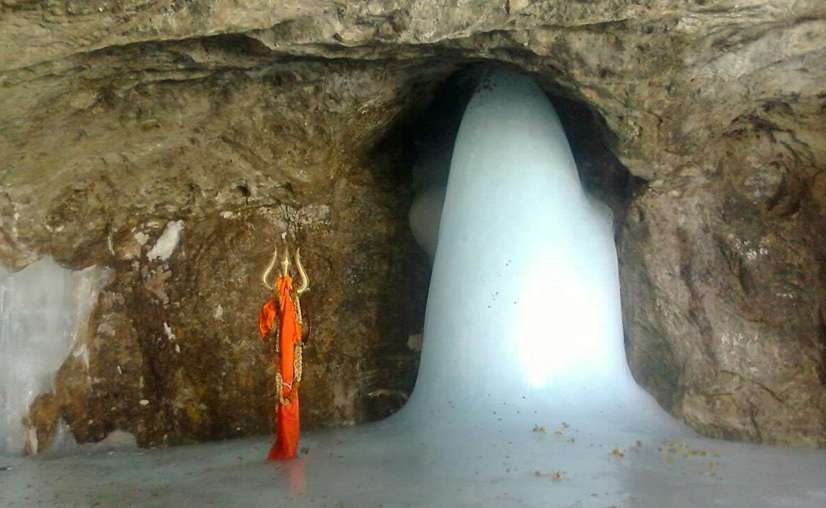Amarnath, located in the Indian union territory of Jammu and Kashmir, is renowned for the Amarnath Cave Temple, a sacred Hindu pilgrimage site dedicated to Lord Shiva. The temple is situated at an altitude of approximately 3,880 meters (12,700 feet) and is famous for the naturally formed ice Shivling (a representation of Lord Shiva) that appears inside the cave during the summer months. The annual Amarnath Yatra pilgrimage attracts devotees from all over India who embark on a challenging journey to seek the blessings of Lord Shiva. Here’s what you should know about the Amarnath Yatra and the Amarnath Cave Temple:
Amarnath Yatra:
- Pilgrimage Route: The traditional route to the Amarnath Cave Temple starts from the base camp in Pahalgam or Sonamarg. The trek takes pilgrims through breathtaking landscapes, including meadows, snow-covered mountains, and glaciers.
- Holy Ice Shivling: The main attraction of the temple is the ice formation that resembles the sacred Shivling, which is believed to be a manifestation of Lord Shiva. This ice formation naturally occurs due to the freezing of water dripping from the cave’s roof.
- Challenging Trek: The Amarnath Yatra is physically demanding due to the high altitude, steep climbs, and unpredictable weather conditions. Pilgrims need to be in good health and physically prepared for the journey.
- Duration: The Yatra takes place during a specific period, usually from June to August, when the ice formation is believed to be at its peak. The duration of the Yatra varies each year.
- Accommodation: Various government and private arrangements provide accommodations and facilities along the Yatra route.
- Helicopter Services: Helicopter services are available for pilgrims who want a shorter and more convenient journey to the temple. These services operate from Srinagar, Pahalgam, and Baltal.
Amarnath Cave Temple:
- Cave Environment: The cave itself is quite unique, with a naturally cold interior due to the ice formation. Devotees experience a sense of awe and reverence upon entering the cave.
- Religious Significance: The Amarnath Cave Temple holds immense religious significance for Hindus. It is believed to be the place where Lord Shiva revealed the secret of immortality to his consort, Goddess Parvati.
- Baltal Route: Apart from the traditional route, there’s also a shorter but steeper route to the temple starting from Baltal. This route is preferred by some pilgrims due to its relatively shorter duration.
- Cave Opening Ceremony: The temple opens its doors to pilgrims with a special ritualistic ceremony on the auspicious day of Ashadhi Purnima.
The Amarnath Yatra is not just a religious journey but also a test of one’s physical and mental strength. Pilgrims experience a mix of spiritual devotion, breathtaking landscapes, and the satisfaction of accomplishing a challenging trek. Due to the challenging nature of the Yatra and the remote location, it’s essential to stay updated on the current situation, follow travel advisories, and make necessary preparations before embarking on the journey.

